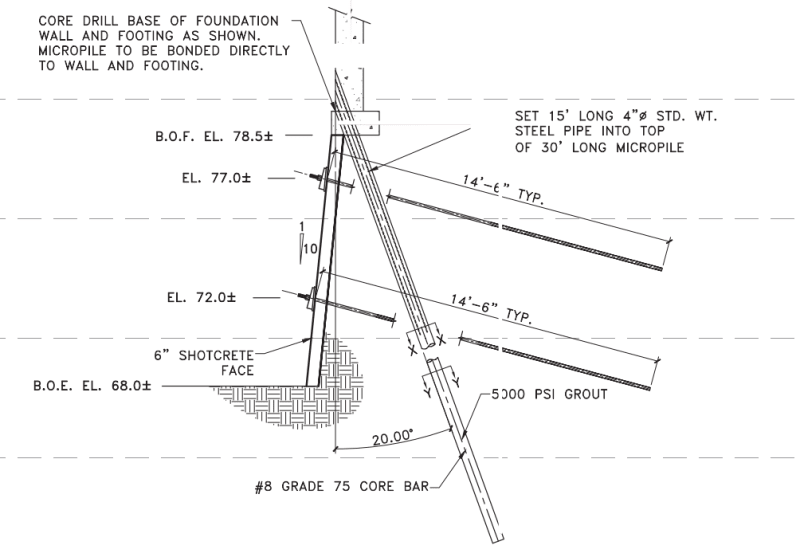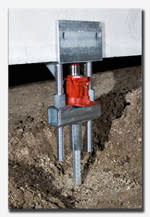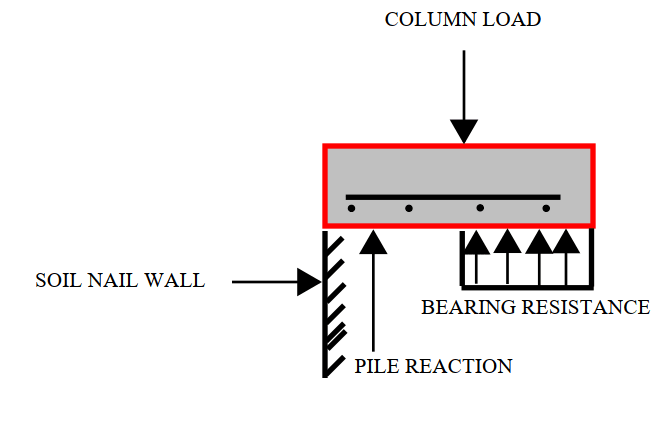MTNClimber
Geotechnical
This underpinning project came across my desk for review. I was hoping to get some opinions on the load transfer and resulting deflection of the pile to see if I'm overthinking this. The pile will not be preloaded so the load transfer will cause some amount of settlement of the existing building, which needs to be reviewed and accepted by the building owner's engineer.
Would the anticipated settlement be PL/AE plus lateral deflection of the pile from the batter? Does the theoretical deflection even come close to the actual settlement?

Would the anticipated settlement be PL/AE plus lateral deflection of the pile from the batter? Does the theoretical deflection even come close to the actual settlement?



